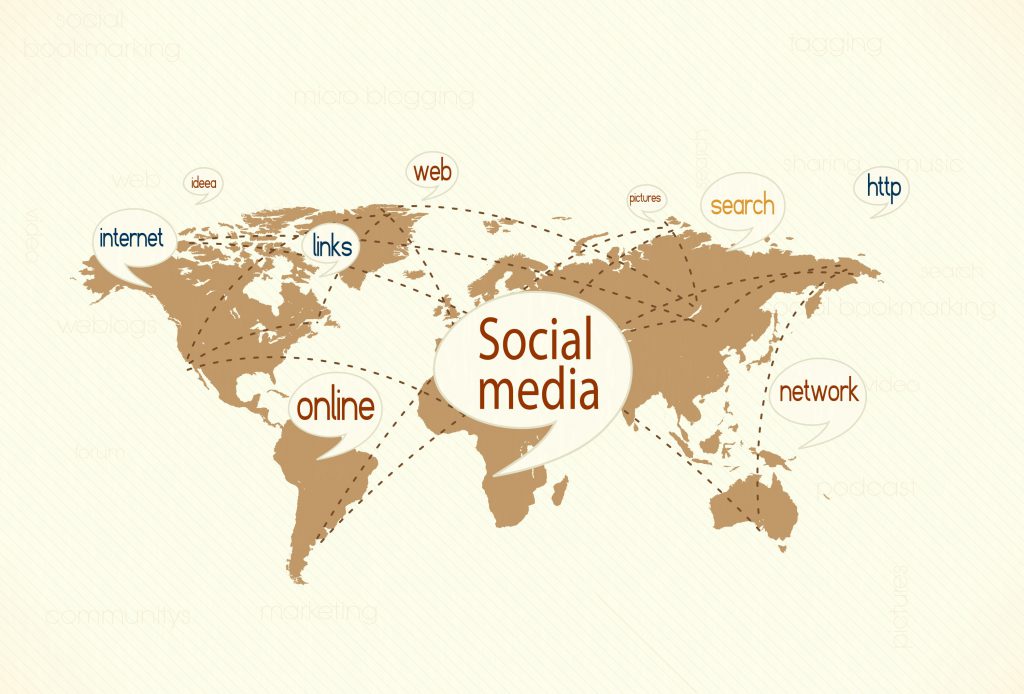
Programs that must be deleted from your computer



From big data to virtual reality, technology continues to make huge strides in the real estate space year after year. But, if you’ve ever worried that these advancements will make your brokerage services obsolete, never fear. I’m here to put your mind at ease.
The National Association of REALTORS®’ 2016 Profile of Home Buyers and Sellers survey found that 87 percent of buyers used an agent last year compared to only 81 percent in 1981. You read that right. As technology and internet connectivity have increased, more consumers are turning to agents, rather than fewer.
But that doesn’t mean you should become complacent. We must remain the experts in all things real estate and continue to offer irreplaceable value in our marketing and negotiation skills. That includes incorporating tech trends that will help buyers and sellers achieve their goals.
“Aside from internalizing technology on an everyday basis to run your real estate business … there are some very huge tech trends that literally can change everything as we know it,” said Niraj Ranjan Rout, cofounder and CEO of Hiver, which publishes the Gmail app of the same name, in an email interview about the biggest tech trends of 2017.
Here are a few such trends:
Consumers have long been enjoying virtual realty in the gaming industry. Now, many — especially millennial buyers and sellers — have come to expect the VR and 3-D video experiences. Even in my own household, it’s unheard of to go see a movie like “Star Trek” without seeing it in 3-D. VR has seeped into our society’s collective expectations, and that doesn’t turn off when it’s time to house-hunt.
“VR is most certainly one of the most exciting and course-altering tech trends for real estate,” said Rout, who notes many different real estate firms are experimenting with VR headsets such as Oculus Rift and Samsung Gear.
Sotheby’s International Realty, in partnership with Matterport, recently introduced 3-D and VR tours online. John Passerini, the brand’s global vice president of interactive marketing, was recently quoted on Sotheby’s blog as saying, “Distance can present a challenge when looking to buy a home, and virtual reality has provided a provocative solution. This technology is allowing buyers to purchase homes without having to physically travel to view them, which is especially relevant to the global clientele we serve.”
Indeed, as VR continues to grow, it will completely change the real estate customer’s experience by providing buyers the ability to experiment with different home styling options, navigate floor plans, and get a full 360-degree view of the house. Imagine the day when “a prospect can take a slow walk around the garden of the house, experience the wine cellar, [and] stretch their arms to see if the kitchen is spacious enough,” said Rout.
You may not be immediately attracted to Facebook posts from friends checking in at restaurants and post about their lunch, but all that data can actually be useful for your business. Well, maybe not exactly the lunch specials, but geographical check-ins and other types of information being shared may help direct you and your agents to the people who will soon be buying and selling.
Facebook and other companies are collecting all that data in order to tailor advertising and digital marketing. “It allows you to access detailed information about a customer and analyze their past behaviors,” said Rout. “Even simple factors such as the life stage of the prospect, their employment status, marital status, number of kids, and demographics can be included to generate a list of rich targets for whom you have the information to provide rich customer experience.”
There are various ways to retrieve such data, including Facebook ads. With more than 1 billion people logging in daily and sharing bits and pieces about their lives, Facebook is a gold mine of data for real estate professionals to help connect with people when they are gearing up for a move. In fact, Facebook allows advertisers to target consumers by categories such as “likely to move” and “For Sale by Owner.” The days of arbitrarily mailing postcards to people who may not be in the market to buy or sell are long over. Now you and your agents can use big data to directly find the ideal client. And it’s affordable — an ad can cost as little as $1 to $5 per day.
If you’ve ever caught an episode of the old cartoon “The Jetsons,” then you’ve likely fantasized about your own smart or fully automated home. Well, what was once reserved for luxury properties is now available to the mass market. Technology such as smart lighting, automated door locks, temperature controls, and more are increasingly in demand among all home buyers. It’s improving energy efficiency, quality of life, home functionality, and more, said Rout.
Are your agents ready to market smart-home features or advise buyers on the technology that’s available? Do they know the price points and the best local vendors? Do they know what smart-home upgrades can help a home sell faster? “Dismissing technology as some overrated unnecessary luxury can be a not-so-smart thing to do, and so is being a late adopter of new tech trends,” Rout said.
Technology is changing, and it’s enhancing our ability to market to and connect with prospects. Start embracing these trends at your brokerage now to keep your business in tune with what buyers and sellers want, while ensuring that your services continue to be irreplaceable.
Lee Davenport is a real estate broker and business doctoral candidate who trains real estate agents and brokerages on how to work smarter in real estate. Join Lee’s free RE Tech Insider’s Club at LearnWithLee.REALTOR for tips and tools to help your business thrive.


Online reviews aren’t just for restaurants; they are equally useful for real estate marketing. They also happen to be Kimberly Sethavanish’s secret weapon.
Sethavanish, a salesperson at Century 21 Alliance in Santa Rosa, Calif., has gained three listings from clients finding her positive reviews on Yelp. After each transaction, Sethavanish asks her clients to share their experience with her services and, for the most part, they are happy to help. And best of all, these highly persuasive online reviews are free.
“If you’re not putting yourself out there, you’re not able to be found. That’s worse than anything else,” says Sethavanish, a member of REALTOR® Magazine’s 2016 class of 30 Under 30.
For this year’s 30 young entrepreneurs, technology and online tools are a way of life in their business, keeping them connected to clients and organized at the office and helping to smooth out any bumps in the road to a successful transaction.
We asked a few of the 30 Under 30 honorees to share the tech tool that keeps them on track. Here’s what we found:
In addition to online reviews, Sethavanish is also a fan of DocuSign because it helps cut the response time in her hot seller’s market. “I’ve seen it make or break a sale,” she says. “With DocuSign, you can get your counteroffer in before someone else does.”
Several other 30 Under 30s also attest to the benefits of electronic signatures.
Shari Anhorn, CRS, GRI, team member and broker-owner at Brokers 12 Inc. in Minot, N.D., has been using DocuSign, a REALTOR Benefits® Program partner, since 2011, putting her among the first agents in Minot to use electronic signatures.
“This is rural North Dakota, and to be able to have a seller or buyer who is two hours away sign a document from afar is tremendous,” she says. What’s more, many of her clients are military personnel who have to purchase property sight unseen, and DocuSign has eased the process, Anhorn says.
But some 30 Under 30 members are careful not to assume every client knows how to use even the most basic technology.
The market that Diego Espinoza-Martinez, salesperson with Keller Williams Realty-Tulare in Visalia, Calif., serves is largely agricultural and heavily impoverished. While he uses DocuSign with some clients, it’s not always appropriate, he says. Instead, Espinoza-Martinez takes the time to learn his clients’ comfort level with technology and then decides on the appropriate tools for the transaction.
Another tool for going paperless is Genius Scan, available through both the App Store and Google Play. Wade Corbett, CRS, GRI, salesperson with Keller Williams Realty in Raleigh, N.C., is an avid user. “I scan a business card and import it into my database. That way, I don’t have to carry around a bunch of cards,” he says.
Genius Scan can be used to scan forms, receipts, or a multitude of other real estate documents from your smartphone. Save the images as PDFs and email them on the go. You can also export the files to your cloud service of choice, such as Dropbox or Google Drive.
Alexander Parker, also a 2016 30 Under 30 honoree, creates property folders in Dropbox for his clients, where they can share pictures, maps, and other relevant documents. Parker, salesperson with Lord & Stanley Realty in Tallahassee, Fla., is also rarely without his iPad so that he can access files anywhere and look them over with clients in the field.
In San Diego, Sarah Davis, SRES, broker owner of Davis Estates, takes her Surface Pro tablet to every client meeting. “I can take it to a showing and the buyers can sign a purchase order and send it to the listing agent while we’re still in the house,” she says. In California, agents are required to give a copy of the contract to the signer at the time it is signed, so she emails a copy to her clients directly from her tablet.
For software, she uses Microsoft OneDrive for Business, a secure cloud service, for all her transaction files. “It’s safer than email, and if my computer dies, everything is still in the cloud,” Davis says.

Connie Chung, salesperson with Vanguard Properties in San Francisco, considers herself old-fashioned when it comes to staying in contact with her clients. She prefers dinners and coffee meetings over informal emails. “I can see their facial expressions, hear the tone of their voices, and have them hear mine,” she says.
And when a client needs more attention — when they’ve expressed unhappiness with a property or have an issue that needs to be resolved — Chung says that writing an email is the last thing you should do. “I find it simplifies my life if I pick up the phone, so I can really hear where they are coming from and ask if we can meet for coffee,” she says. “A lot of times, meeting face-to-face takes away any discomfort for both parties.”
On the social media front, she engages with clients and her sphere predominantly through Instagram. “Recently, I was touring a new development. It was great to wear a hard hat and neon vest and post behind-the-scenes photos that a lot of people don’t usually get to see,” she says.
Corbett describes his database as the core of his business, so he uses Brivity, a cloud-based CRM, to stay in touch. “It helps me follow up better and makes me able to utilize my time better,” he says.
Honoree Rebekah Eaton, associate broker with RealtySouth-MB-Crestline in Birmingham, Ala., is always looking for meaningful ways to stay connected to her sphere. So she recently started using BombBomb, a service that helps users produce video greetings that can be shared via email or text. “I take a little time to record a short video saying, ‘Thinking about you.’ And then I send it on. Bam.”
Scott Steadman, a Windermere Real Estate agent in Draper, Utah, uses his real estate blog to tell the story of his clients. “I talk about the family who spent years gathering around the fireplace for birthdays and holidays, and how that room was the place where they felt whole,” Steadman says. “Pairing posts like that with social media always gives my followers a reason to come back to my website for more info.”
Consistency is also key, Steadman says, so he rarely lets more than a few days separate his posts, which cover everything from market trends to before-and-after renovation photos.
Brittany Barsky-Allison, team member with Wydler Brothers in Bethesda, Md., focuses on promoting her business on Facebook in a “fun, organic way.” She creates an advertising campaign for every one of her listings, and she often posts pictures with clients or of homes she’s toured on her personal and business pages. She celebrates each closing with a status update and is frequently “liking” and commenting on her friends’ statuses and photos.
“This has helped me to pick up referrals and create a sense of expertise amongst my peers,” she says. “Brokerages must continue to place more emphasis on the people in the real estate industry and recognize that people buy homes, not computers, robots, or smartphones. Technology strengthens our industry, but people are at the core, and we cannot forget that simple fact.”
Barsky-Allison uses Salesforce.com to track her pipeline and communicate with her sphere of influence. She sends out weekly and monthly emails as well as monthly market updates, and acknowledges the buy or sell anniversaries of her clients by sending a note or gift.
Customer service is a top priority for honoree Jessica Bean, salesperson with Century 21 Price Right in Lewiston, Idaho. That’s why she arms herself with data from NAR’s Realtors Property Resource® before every marketing or listing presentation.
“It’s one of the most integral pieces of my business,” says Bean, who will compare RPR’s detailed reports against her own research on comps as well as the assessed value of a property. The reports also help her make the case that presale updates can make a listing much more attractive.
Bean also notes that RPR can help her craft a competitive offer in the seller’s market that currently defines much of her area. She uses it to help buyers put themselves in sellers’ shoes, explaining how she’d use the RPR data to price the home if she were the listing agent on the property. And finally, Bean loves the fact that she can pull RPR up on her phone on the go: “I literally use it every day in my business. Man, it’s a lifesaver for me.”
Credit to Erica Christoffer
Erica Christoffer is a consulting editor for REALTOR® Magazine.

In examining how the Internet of Things will change the way people buy, sell, and manage property over the next few years, it’s clear that the universe of Internet-enabled devices and beacon technology could also change the way the industry organizes itself.
In case you missed our print feature examining the Internet of Things (or IoT) and real estate, here’s a quick recap of how this technology works: Smart devices record and transmit data in a variety of ways, and many of these devices are focused on improving consumers’ interactions with homes and businesses. One familiar example is the Nest thermostat (created by a company recently purchased by Google). This device allows users to control the HVAC system of a home remotely, using a smartphone. But for a device to be truly “smart,” it needs to be more than a glorified remote control. The Nest learns a household’s schedule and programs itself based on its owners’ habits. Individual users can set baselines about how much water or electricity they want to use, but the device can also coordinate these commands with data from the National Weather Service or a city’s electrical grid to help conserve energy and save money. Beacon technology is another facet of the IoT world. These small devices, usually powered by Bluetooth low-energy technology, can be mounted virtually anywhere and transmit information about the environment to nearby receptors (usually to mobile devices via app software).
Organizations can also use this emerging technology to better serve members and event attendees. Beacon technology has already been used to enhance trade show and meeting experiences at the Las Vegas and San Diego convention centers, among others. Beacons can deliver location-based information to visitors, gather audience feedback in real time, and offer smarter, faster ways to register for and network at large gatherings.
Just as increased information about homes captured by Internet-enabled devices can help listing agents market properties better, and just as environmental data captured by municipal smart devices can help buyer’s agents determine the best neighborhoods for their clients, so can IoT help associations improve the member experience. The California Association of REALTORS® is building a warehouse of sorts that will merge some of the more traditional member information, such as designations and committee involvement, with data that tracks member behavior, like interactions with webinars, e-mails, and zipForms. The association hopes to use the data to help them make more informed, strategic decisions about member benefits and engagement.
“This year, we’re going to start looking at correlations between behaviors and trying to determine what we can learn about that in order to make our investments more effective,” says Josh Sharfman, CAR’s chief technology officer. “What can we do to make members more productive?”
Sharfman sees the potential in using beacon technology to proctor educational courses. Beacons can be set up to record when particular people enter and exit a room, allowing associations to set up a check-in process during a board of directors meeting or continuing education class.
“Of course, there is a creepiness factor to being able to follow a person around at all times. But when it comes to a committee member, who is being paid for their time, being able to account for whether or not that person is in the room when they say they are is a pretty reasonable use of the technology,” says Sharfman.
Technology experts at the National Association of REALTORS® are also watching these developments closely.
“I think NAR will get into the IoT game in the near future,” says Chad Curry, managing director of NAR’s Center for REALTOR® Technology. “It has the potential to improve member experience and value.”
Curry adds that IoT data could someday augment the research department at NAR or other associations. By using predictive analytics carefully, the tracking of industry trends could benefit from information gathered in real time by Internet-enabled devices.
“We might be able to see a recession coming faster if we notice that there’s less traffic on Michigan Avenue,” Curry says, referring to the iconic stretch of high-end retail known as the Magnificent Mile in Chicago. “Maybe there’s a specific store, even, that signals that.”
Though beacon technology is still new, it’s already being used to augment home tours. Avid Ratings, a customer loyalty management firm for homebuilders based in Madison, Wis., launched an updated version of its home tour software at the International Builders’ Show in Las Vegas this January. Called GoTour Onsite, the new version uses beacon technology to enable house hunters to tour a model home on their mobile device. As they enter each room, customers can immediately access floor plans, options for customization, and videos that provide in-depth information about hidden aspects of the home, such as building materials and HVAC systems.
Folding this type of data into a multiple listing service feed could be game-changing. MLS listings could be augmented with data feeds from outside sources, perhaps allowing buyers who gaze out a “smart” window to see up-to-date municipal information about how much traffic goes by, or to have the area’s Walkscore pop up on their mobile device when they’re standing on the front porch. Sharfman says he sees this technology as an opportunity for MLSs to add real value to the home tour experience, especially for the luxury market in California. Such smart home tours could even be produced using information pulled directly from an MLS listing, making the home marketing task a bit simpler for individual real estate pros.
The data flow could theoretically go in both directions; while MLSs could provide and package new information about for-sale properties, they could also collect information about transactions that could prove to be useful for MLS members. An MLS could use beacons or Internet-enabled lockboxes to record how much time house hunters spend in each room, helping listing agents better position a property for sale based on real-time feedback from buyers. By having this data on all homes in the MLS, members could get an idea of how many minutes of attention their listing has gotten compared to other homes on the market.
Of course, the development of such complex data-sharing systems may be awhile off, depending on the pace of development both within the technology sector and in associations and MLSs.
“It’s going to take effort and investment to make it work on all sides of the deal. It requires a sophisticated real estate professional to add in data streams, as well as some of the narrative information about what it’s like to actually live there that sellers may tell the listing agent,” says Sharfman. “But it also requires a dedicated MLS to make sure all these data streams work together and feed up information in a useful way that home buyers will actually enjoy interacting with, rather than seeing it as a distraction.”
Todd Carpenter, NAR’s managing director of data analytics, also views this as a way to shift the value proposition for real estate professionals in the future.
“The piece of the pie that is MLS data is getting smaller,” Carpenter says. “If you’re selling yourself, you can say ‘I’m the one who can help you decipher this expanding data,’ instead of ‘I am the one who can show it to you.’ The person who only has the keys to the MLS is not going to be successful in the future.”
While the complexity of the task ahead is great, so too may be the rewards. Curry agrees that the Internet of Things is ripe for organizational investment. “This is a beautiful time to be working on this. Listing data is almost passé right now [and] home performance data and behavioral data are going to become key,” Curry says. “If the MLSs and the associations and portals were to get into this market, it could be a real boon for the industry.”
Meg White is the managing editor of REALTOR® Magazine

Until it slows to a crawl, idles, or crashes, you likely take for granted that your laptop or desktop computer will do what you expect it to. But it’s risky to overlook regular computer maintenance and even worse to be in the dark about whether your backup system is functioning. The fact is your computer will give out on you one day; you just don’t know when. The average useful life expectancy of today’s computers is anywhere from two to five years, says Matthew Cohen, chief technologist for Clareity Consulting, a real estate technology firm based in Scottsdale, Ariz. But you’ll likely be able to increase the longevity of your devices—and eke out perhaps seven or eight good years—by following these tips. In short, a fast, fit, and trouble-free computer requires regular updates, cleanups, and backups.
Your computer is probably covered with tiny dust particles, which can severely shorten its life span. “Dust is a killer,” says Burton Kelso, owner and chief technology helper of Integral Computer Consultants, a Kansas City, Mo., computer repair company. “When dust collects inside your technology, it can cause your devices to overheat, which will cause them to fail.”
To beat back interior dust bunnies, Kelso recommends his clients—15 percent of whom are real estate agents—clean the inside of their computers once a year. If you’re not comfortable with unscrewing the housing and zapping the inside with a can of compressed air, then hire a professional. The can costs less than $10, while professional help will set you back between $50 and $100 per hour.
Aside from keeping mechanical parts of your computer clean, you should also pay attention to software clutter. Delete programs and applications you don’t use. Cohen suggests using the “add and remove software” feature to cull old files and programs. “Always keep the hard drive at least 20 percent empty,” he adds. “If you have too much stuff, it’s time to upgrade your hard drive, with technical help, or remove unneeded files.”
Don’t install another program just to find out which programs to clean up. Cohen says practitioners should avoid utility apps that promise to optimize or clean your computer. “They cause more harm than good,” he says.
Older computers used to benefit from defragmenting, which basically compacted information on your hard drive, speeding up your system. Cohen says most Windows defragmentation utilities are set to run automatically. “However, sometimes, one needs to analyze and defragment the discs,” he adds. To do this, go to the Start menu, type “defragmenter,” and locate the “disc defragmenter” utility. Mac users “generally don’t have to defrag,” Cohen notes. “It does it on its own.” Finally, check your preferences and examine which programs launch automatically upon startup and which ones are constantly running in the background. You can almost always change the settings so that they use up less of your computer’s operating power.
Kelso says malware is the cause of many computer issues, so Windows and Mac users need to take protective steps. Always download antivirus software directly from the vendor site, and don’t share your account information with others.
Part of keeping your computer secure is limiting access to it. Marc Catuogno, director of information technology for Better Homes and Gardens Rand Realty in New City, N.Y., oversees 200 computers for 800 active agents and 23 offices. To keep data safe on corporate computers, Catuogno suggests centralizing important information and making it inaccessible to the general sales population.
“We keep our data in the main home office,” Catuogno says. “Anything really important we keep on our extranet, [which] is password-protected and limits the harm that agents can do to each other’s data.”
Keeping information stored this way can actually help agents’ computers run more efficiently, because the hard drive doesn’t have to store data locally. “There is very little information actually on the computers; everything is Internet-based,” Catuogno says. “We encourage the agents to keep their own portable thumbnail drives if they need to access things.”
And it’s not just other users you need to be careful about; be choosy about the web applications you use as well. Read their user agreements and research past security breaches before signing up. If you’re looking for a free e-mail solution, choose Gmail, Kelso says, over the less-secure Yahoo or AOL.
Sometimes computers are slow because you’ve been ignoring that box that pops up telling you it’s time to update programs, or even to get the latest operating system. If you’re really far behind, that can mean your software and hardware don’t have the patches they need to interact smoothly and safely.
However, don’t get too update-happy. Sometimes it’s best to wait a few days on major updates to make sure they work properly. United Real Estate Scottsdale broker Byron Short, who oversees information technology for 42 agents, warns practitioners against updating immediately. “There’s no reason to be on the bleeding edge,” Short says. “Let somebody else take the damage. Then come in when it’s proven and it works.”
Everyone needs to prepare for the worst-case scenario: losing your data in a crash. Store critical business data on secure servers or using cloud-based systems like Carbonite or Dropbox. Even when your computer suffers a catastrophic failure, this doesn’t mean your business has to experience it as well. Kelley Skar, a real estate practitioner with CIR Realty in Calgary, Alberta, says the last time his laptop crashed in 2012, he lost 30 percent of his data. Fortunately, he’d backed the remainder up using online storage systems. Since then he’s spent about $300 to add a two-terabyte external hard drive that uses Apple’s Time Capsule program to back up his data locally once a month.
No matter how well you manage your computers, you’ll need to replace them eventually. Catuogno’s company uses Windows and Acer machines, but it doesn’t change out its inventory wholesale. Instead, he replaces the oldest machines with new PCs every 12 to 18 months. The company does keep older models that still have life in them available for agents who prefer to stick with what they know..
Michelle Hofmann is a Los Angeles-based freelance reporter who loves all things real estate. Connect on Twitter @realestatewritr or via LinkedIn or michellehofmann@earthlink.net.